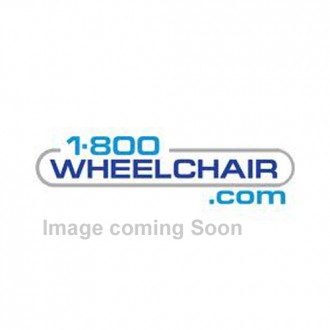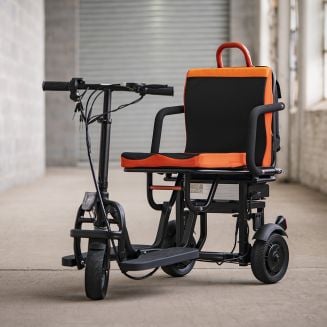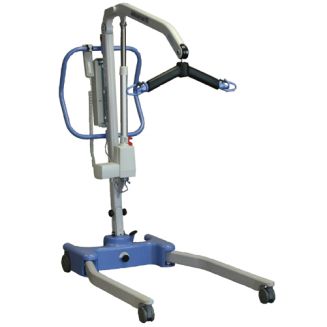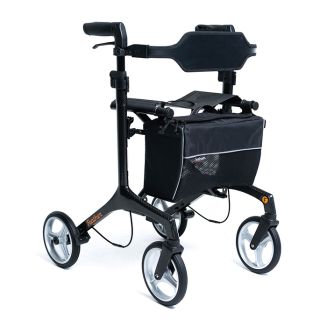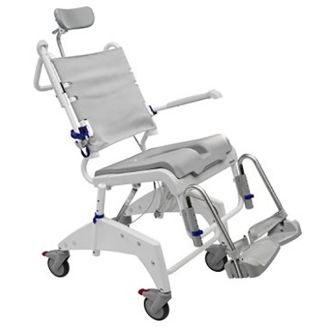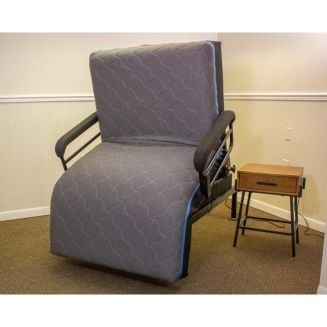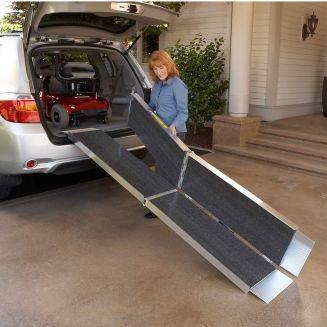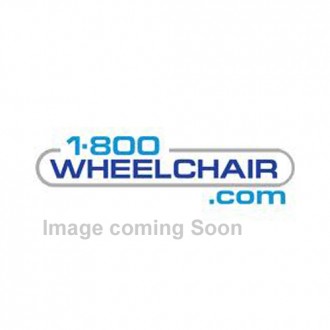Air Travel With a Wheelchair
Bottom Line: Can I bring my wheelchair on the plane?
Yes, you can travel with your wheelchair on flying an airplane. However, there are some important things to consider, including the size and type of wheelchair. There is limited space onboard larger airplanes for a single standard wheelchair or transport chair. Power wheelchair and rigid-frame wheelchairs will need to stored underneath - aka gate checked. Power chairs which use a sealed battery - lead acid or gel, which is most - will have no issues.
General Tips for Booking your Flight
- Book an aisle seat toward the front the plane.
- If you are travelling with a power wheelchair, make sure to have the make/model/type of battery available when calling the airline.
- Book direct flights if possible. This avoids the hassle of boarding and exiting a plane twice.
- Make sure to think about how you’ll transfer into the seat. Pack transfer straps or a transfer board.
- Take a picture of your equipment in case any conflicts arise due to damage incurred while transporting.
Dealing with Batteries
For domestic US travel, non-spillable batteries are allowed onboard an airplane. All power mobility products - include power wheelchairs and mobility scooters - we sell use this sort of battery. They come in two types:
- Sealed Lead Acid (AGM and Gel): Your power wheelchair is most likely to have this sort of battery. During transport, the battery may remain installed if it is securely attached to your mobility device. The battery housing provides protection from damage and the terminals are protected from short circuit. The battery cables may remain connected only if the device is protected from accidental activation. For additional information, visit: https://www.faa.gov/hazmat/packsafe/more_info/?hazmat=35.
- Lithium-Ion: Less common are lithium-ion batteries. These batteries must be removed from the mobility device and carried in carry-on baggage only. The passenger must advise the plane’s crew of the battery location. For additional information: https://www.faa.gov/hazmat/packsafe/more_info/?hazmat=36.
International travel will require further research based on the country you’re travelling to and the airline you'll be travelling on.
What to Expect for your Flight
The day before your flight, call your airline and airports to verify your reservation, your accessibilities options, and any other concerns you may have. Check-in can be performed online, through an app, or at the airport. Most airlines recommend arriving at least 1-2 hours before your flight, but wheelchair users may wish to give themselves, even more, time before their flight to clear security, check their wheelchair or other equipment, and make their way around the airport.
At security, some airports will require you to check your power wheelchair or scooter prior to clearing security checkpoints. If this is the case, you will be given a terminal wheelchair - and likely an attendant - to guide through the airport. Be sure to remove your personal belongings, including bags and backpacks, from your equipment. Security will assist you through the procedure, so don't be afraid to ask questions or for help.
When you reach your gate, speak with the airline representation at the terminal about pre-boarding. Once pre-boarding begins and you make your way down to the plane, you will need to be transferred to an aisle-sized wheelchair. Passenger jets have a minimum aisle width of 15 inches. Before leaving your personal wheelchair, remove or protect any sensitive electronics, like a joystick for a power wheelchair, and remove any modifications likely to break in transport, like a headrest. If you have a power wheelchair, put it in free-wheel mode. Lastly, be sure to take your cushion with you and bring it on-board to use during your flight.

Above is an example of an aisle chair.
In-Flight Toileting Options
In flight, your bathroom options may be limited. Some airlines may be able to transport you to the bathroom via an aisle wheelchair. This is why it's important to book an aisle seat, if possible. Some wheelchair users have utilized catheters or adult incontinence products to avoid the issue to using the airplane bathroom during the flight.
For shorter flights, you may be able to avoid needing the facilities, especially if you use a handicap-accessible bathroom at the airport before boarding your flight and limit your fluid intake until you land. Travelling can include delays, dehydration can cause other issues. So, be careful if you're going to just skip the fluids. This is another good question for your airline ahead of booking, ask about in-flight accessibility options.
Arrival at your Destination
Once you arrive at your destination, you will be required to wait until the rest of the passengers have vacated the plane. With the assistance of the airline attendants, you will be escorted off the plane in their designated wheelchair. Generally, you can expect that your personal wheelchair will be returned to you at baggage claim.
Reminders and Additional Tips:
- If you have a choice between a direct flight or connecting flights, consider opting for the direct flight. Even if it costs a little extra, it may be worth avoiding the hassle of exiting and boarding a plane twice. Plus, the wear of transfering your wheelchair from plane to plane.
- Always call the airline prior to booking your flight to ask about their accessibility options and how they can accommodate your individual needs for boarding and exiting the plane as well as during the flight.
- Contact the airports (both departing and arriving airports) to ask about security procedures for wheelchairs and other potential accessibility issues.
- If your wheelchair or accessibility equipment is damaged during your flight, contact the U.S. Department of Transportation (https://www.transportation.gov/airconsumer/file-consumer-complaint) to file a complaint.
